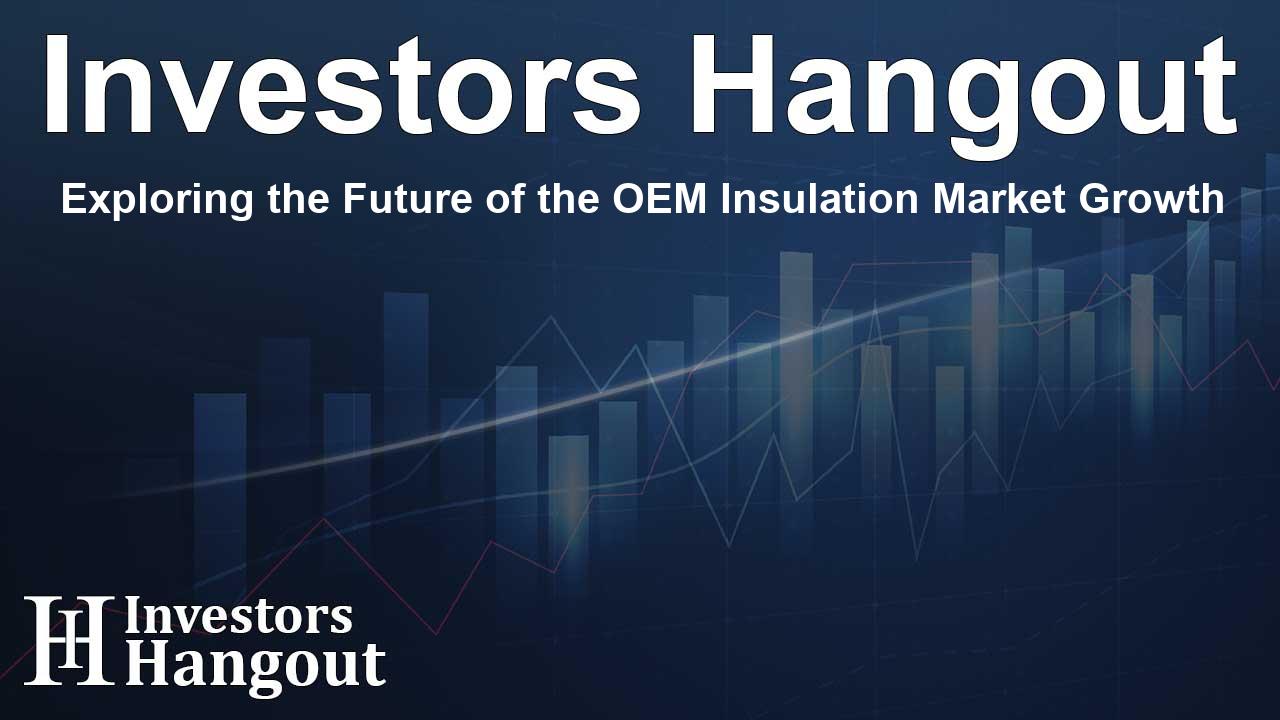Exploring the Future of the OEM Insulation Market Growth

OEM Insulation Market Growth Insights
The OEM insulation market is on a promising trajectory, expected to reach a significant value of USD 24.80 billion by 2030. This growth reflects a robust compound annual growth rate (CAGR) of 5.5%, driven primarily by the rising energy and power requirements in developing regions along with global initiatives mandating efficient insulation materials for energy conservation. Key industries, particularly HVAC manufacturers, are increasingly focusing on integrating technical advancements in insulation materials, thus fueling the expansion of this market.
Drivers of Market Growth
A major factor contributing to the growth of the OEM insulation market is the adoption of air-conditioned technology in public transport vehicles. Many governments around the world are now embracing energy conservation through integrated management systems that adapt to environmental and traffic conditions. This shift is reflective of a broader trend towards sustainability and energy efficiency.
Segment Analysis: Polyurethane Foam Dominance
Among various materials used in manufacturing OEM insulation, Polyurethane Foam (PUF) is estimated to dominate market share due to its exceptional thermal insulation properties. Its lightweight nature and flexibility make PUF popular across diverse sectors such as automotive, construction, and industrial equipment. PUF enhances energy efficiency by reducing heat transfer, and its application in automotive insulation has been pivotal, particularly for heating, ventilation, and air conditioning systems.
Transportation Sector's Impact
The transportation sector is poised to be the fastest-growing area within the OEM insulation market. With increasing consumer demand for energy-efficient and lightweight vehicles, manufacturers are adopting stringent emission regulations while also prioritizing passenger comfort and safety. Industries in automotive, aerospace, marine, and rail are utilizing insulation materials extensively to enhance overall performance by addressing thermal management, noise reduction, and vibration control.
Electric Vehicle Boon
The surge in electric vehicle (EV) production is markedly influencing insulation solution requirements. Advanced heat management is crucial for operating batteries safely and effectively, driving the demand for high-performance polyurethane foam and polyisocyanurate insulation materials. Furthermore, the aerospace sector's need for lightweight, fireproof insulation materials is becoming increasingly important, as these materials play a critical role in meeting stringent regulatory standards for safety and performance.
Regional Market Dynamics
In terms of regions, Europe is projected to take the lead in the OEM insulation market. Strict regulatory frameworks, a solid industrial foundation, and a growing emphasis on eco-friendly practices are central to this growth. European initiatives, particularly the EU Green Deal, underscore the urgency for advanced insulation solutions in sectors like automotive and construction, where managing energy use is critical.
Innovation and Sustainability Factors
As the automotive sector drives demand for insulation, especially in the context of electric vehicles, manufacturers are increasingly focusing on materials that enhance thermal management and noise control. At the same time, Europe is making substantial investments in research and development to foster innovation and sustainability within the OEM insulation industry. Key manufacturers are also stepping up in terms of technological advancements and resource allocation in an effort to meet evolving market demands.
Key Players in the Market
Significant players in the OEM insulation market include Covestro AG, Owens Corning Corp., Rockwool International A/S, and Knauf Insulation. These companies leverage innovative technologies to maintain their competitive edge and respond effectively to market trends, ensuring resilience in a rapidly evolving industry landscape.
Frequently Asked Questions
What is the projected growth of the OEM insulation market?
The OEM insulation market is expected to grow to USD 24.80 billion by 2030, with a CAGR of 5.5%.
Which material is expected to dominate the OEM insulation market?
Polyurethane Foam (PUF) is projected to hold the largest share of the OEM insulation market due to its thermal insulation properties and versatility.
What impact is the transportation sector having on the OEM insulation market?
The transportation sector is anticipated to experience the fastest growth in the OEM insulation market, driven by demand for energy-efficient vehicles and regulatory standards.
How is Europe positioned in the OEM insulation market?
Europe is expected to lead the OEM insulation market, influenced by strong regulatory requirements and a focus on environmental sustainability.
Who are the key players in the OEM insulation market?
Major players include Covestro AG, Owens Corning Corp., and Rockwool International A/S, among others, who are driving innovation in the sector.
About The Author
Contact Lucas Young privately here. Or send an email with ATTN: Lucas Young as the subject to contact@investorshangout.com.
About Investors Hangout
Investors Hangout is a leading online stock forum for financial discussion and learning, offering a wide range of free tools and resources. It draws in traders of all levels, who exchange market knowledge, investigate trading tactics, and keep an eye on industry developments in real time. Featuring financial articles, stock message boards, quotes, charts, company profiles, and live news updates. Through cooperative learning and a wealth of informational resources, it helps users from novices creating their first portfolios to experts honing their techniques. Join Investors Hangout today: https://investorshangout.com/
The content of this article is based on factual, publicly available information and does not represent legal, financial, or investment advice. Investors Hangout does not offer financial advice, and the author is not a licensed financial advisor. Consult a qualified advisor before making any financial or investment decisions based on this article. This article should not be considered advice to purchase, sell, or hold any securities or other investments. If any of the material provided here is inaccurate, please contact us for corrections.
